
Nissan Qashqai Review

Introduction
There’s a strong argument to suggest the Nissan Qashqai (pronounced Cash-Kai) is the most important family car of the 21st century. Launched back in 2008, it sparked the SUV revolution, dragging customers out of staid, conservative hatchbacks and into high-riding family crossovers.
Over the past decade, the design has evolved, with a shape that’s gradually modernised and a drastically improved cabin, but those tweaks have kept the Qashqai ahead of the game. Last year, the Ford Focus and Volkswagen Golf were the only family hatchbacks to outsell the Nissan in the UK, and the Japanese model outsold every other SUV in the land. Take one for a drive, and you’ll quickly realise why.
Select's rating score* - 3.7 / 5
At a Glance
Although the design may have changed since the first-generation car was revealed, the Qashqai still offers the same compelling mix of competence and quality. The range starts with the relatively spartan Visia models, and rises to the really rather luxurious Tekna+.
Entry-level models have a slight back-to-basics tinge, but the range quickly blossoms with Acenta Premium trim offering everything you need. Step up to the high-end Tekna models and you get pretty much all the kit you’d expect from an executive saloon.
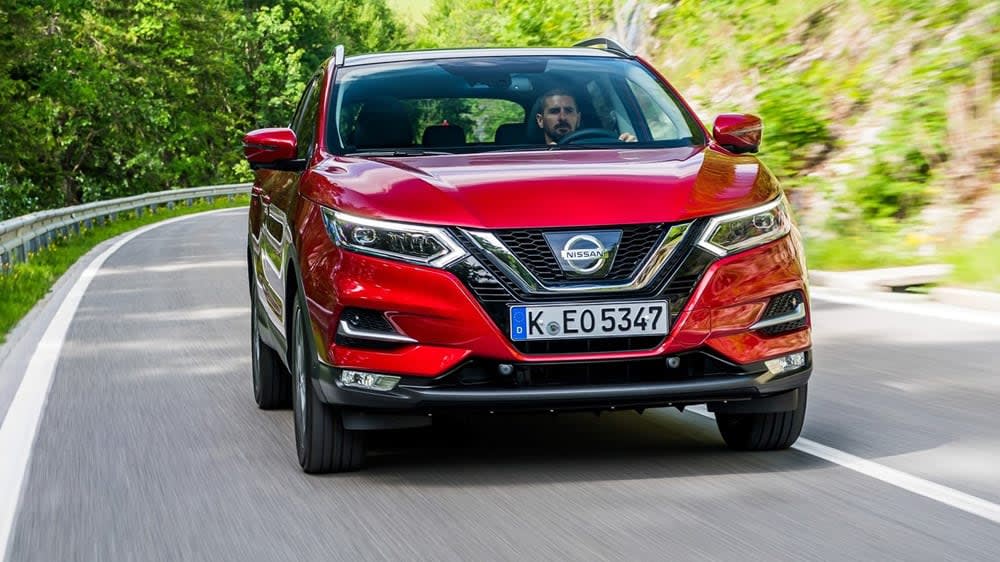
But no matter which version you choose, you’ll still get the same all-round capability that has made the Qashqai such a hit. Other cars may shine brighter in some areas, but few are as capable across the board.
Key Features
While the Qashqai is undoubtedly a jack of all trades, it is also a master of some. The ride comfort is excellent and the whole car is put together really solidly. But Nissan majors on technology, and the Qashqai is loaded to the gunwales with safety and driver assistance kit.
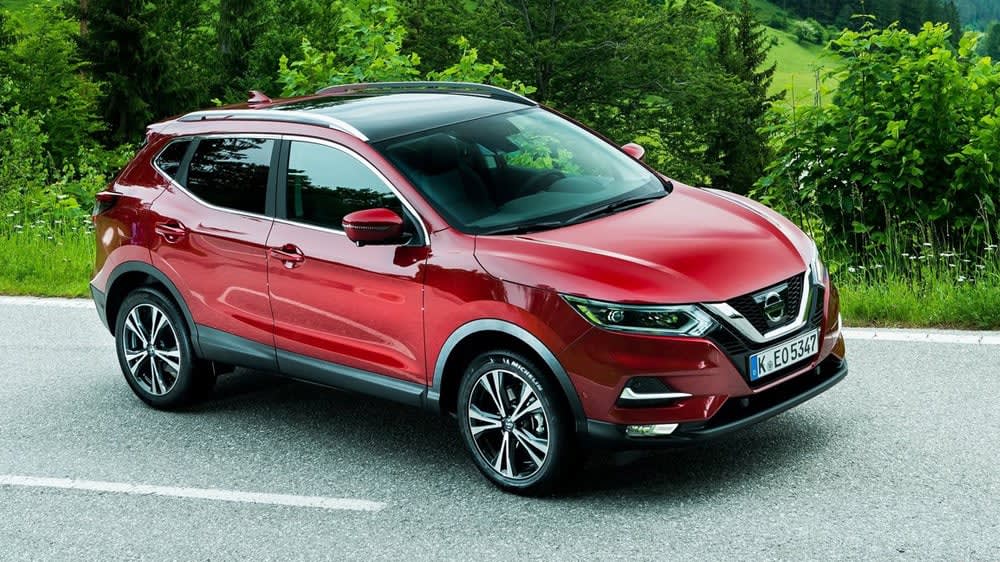
High-end models get a 360-degree camera that offers a bird’s-eye view of the car and its surroundings, as well as gizmos like cruise control, blind-spot monitoring and emergency braking systems that can stop or slow the car if it thinks it’s about to have an accident.
As befits a family bus, you get loads of practical cubby holes, including a big glovebox, a phone holder and a false floor in the boot, which allows you to hide items, make use of a flat loading floor or utilise the full luggage capacity, depending on your needs.
Performance & Drive
The Qashqai is yet to jump on the hybrid/electric bandwagon, so your only engine options are petrols and diesels. The basic engine is a 1.3-litre petrol, which manages to produce 140hp despite its relatively small size. Further up the range, you can have an even more powerful 160hp version of the same 1.3-litre engine, or one of two diesels. The cheaper 1.5-litre diesel produces 115hp, while the 1.7 will send 150hp to the wheels.
Every engine but the 140hp petrol gets a choice of manual and automatic gearboxes, while the most powerful diesel engine is available with four-wheel drive, which provides a modicum of off-road ability. It’s no Land Rover, but it’s more than capable of dealing with a farm track or a muddy field, and that’s all you really need.
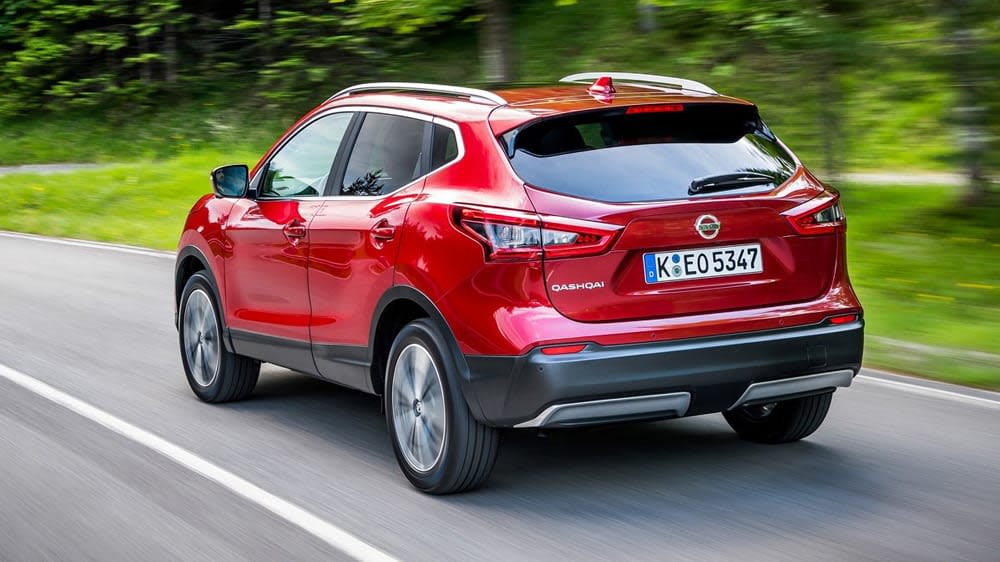
On the road is where the vast majority of Qashqai’s will spend their time, and there the Nissan is a perfectly judged family car. The suspension is set up nicely, offering an impressive ride on all but the most scarred road surfaces while still preventing the body from rolling through corners. It feels solid and substantial behind the wheel, although the steering is slightly numb and rubbery, but good visibility means it’s easy to drive around town. Nissan says its engineers also worked hard to keep road, engine and wind noise to a minimum, and it shows. The Qashqai is as refined as anything in this class.
All of which probably tells you this isn’t really a car for speed freaks. All four engines offer relatively uninspiring performance figures, with the less powerful petrol and diesel engines proving a tad sluggish. The higher-powered petrol engine is better, sprinting from a standstill to 62mph in 8.9 seconds, but it’s hardly rapid. That said, no version of the Qashqai feels dangerously slow, with every engine providing more than enough oomph to feel safe at motorway speeds.
Running Costs
Like most car makers, Nissan has had to evolve with the changing demands of consumers and governments, making its engines ever more efficient and eco-friendly. Although Nissan hasn’t applied hybrid technology to the Qashqai, all four engines are now reasonably clean, meeting the latest emission standards and offering decent economy. Even the thirstiest model returns about 40mpg on the official fuel economy test. However, for those doing regular long journeys, the smallest fuel bills will be found in the dCi 115 diesel engine, which manages to eke more than 53 miles from a single gallon of diesel.
If you’re looking at a Qashqai as a company car, you’ve really got a choice of two engines. The 115hp diesel looks the most attractive in terms of emissions, with a base-spec Visia dCi 115 churning out 139 grams of carbon dioxide per kilometre. But the petrol-powered DIG-T 140 engine is a better call, despite emitting slightly more CO2. With a petrol engine on board, the car sits one company car tax bracket lower, in the 33% band. And because the petrol engine is cheaper, you’ll be paying a smaller percentage of a smaller sum, allowing a kind of saving double-whammy.
Interior
The Nissan’s cabin has a real sense of solidity, and although the design has evolved slightly, it isn’t as modern as some. That said, it’s comfy and roomy in there, and everything is positioned exactly where you expect it to be. It is a bit dark in places, what with those swathes of black plastic, but top-of-the-range models get a panoramic glass roof that really lifts the mood, and cars with electrically adjustable seats are hugely comfortable. If you want to nit-pick, you could point out one or two hard and shiny plastics here and there, but it’s mostly very high quality – particularly for those cars fitted with leather upholstery.
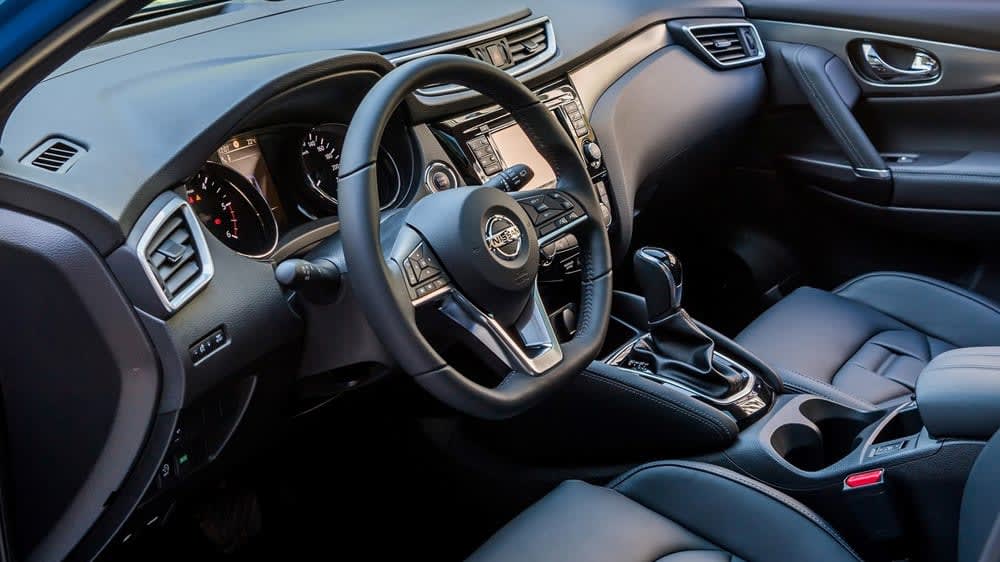
If there’s any major chink in the Qashqai’s armour, it can be found in the heart of the dashboard. The central touchscreen has improved noticeably even since the second-generation car was launched in 2014. Back then, the clunky infotainment system required the operator to have a steady hand and fingers like toothpicks. Now, it’s a little more user friendly, but it still lags behind the offerings from Volkswagen, Kia and Ford. The seven-inch screen may have been tidied up, yet it still feels busy and the graphics are still a bit last-generation.

That said, it comes with all the mod cons, including Apple CarPlay and Android Auto, plus connected technology that allows door-to-door navigation, with the last few yards from the car park to your destination being shown on your smartphone. Plugging in is easy, too, thanks to USB ports in the front and back, and if you opt for one of the more luxurious Tekna or Tekna+ models, you can stream your music through an eight-speaker Bose sound system.
Practicality & Boot Space
The Qashqai isn’t the biggest mid-size SUV on the market, but it still offers plenty of room inside. The 430-litre boot isn’t enormous, but it’s bigger than you’ll find in family hatchbacks such as the VW Golf or Ford Focus, and there’s plenty of room in the cabin for adults. Some will find the Qashqai’s height also makes it easier to get in and out of than a conventional hatchback, and once you’re in, you’ll be greeted with a good amount of head- and leg-room. Four people will sit comfortably, but a fifth might find the central seat something of a squeeze.
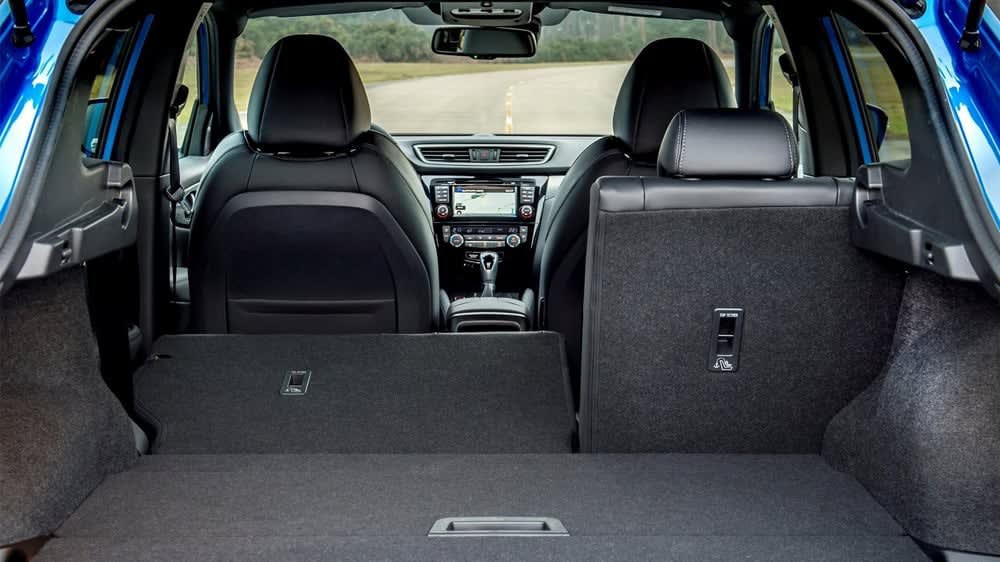
If you do want more space, though, Nissan dealers will point you in the direction of the X-Trail SUV. Although the X-Trail used to be a utilitarian 4x4, the name is now used to denote the Qashqai’s bigger brother, which uses much the same mechanical components as its sibling, but offers a little extra space. It’s even available with seven seats, providing fold-down ‘occasional’ chairs in the boot.
Safety
Nissan has long been at the cutting edge of automotive technology, getting the Leaf electric car to market ahead of the curve and now extolling the virtues of advanced driver assistance systems. All but the most basic Qashqais get autonomous emergency braking that will automatically slow or stop the car if it detects an impending collision, while lane departure warning is there to help stop you wandering out of your lane. Climb the range further and you’ll find blind-spot monitoring and even a self-parking system. You can also have Nissan’s ProPilot tech, which includes a cruise control system that will maintain a safe distance to the car in front.
In addition to that, you can rest assured the Qashqai has a five-star EuroNCAP crash test safety rating, helped by the usual plethora of airbags and other safety aids. You get two sets of Isofix mounting points in the rear, too, so kids can safely come along for the ride.
Options
Opting for a basic Qashqai is not the hardship you might expect, thanks to a relatively generous equipment list. The entry-level Visia comes with Bluetooth, manual air conditioning and cruise control, although you are left with 16-inch steel wheels. The next trim level up is the Acenta Premium, though, and that is arguably the sweet spot in the Qashqai range. You get 17-inch alloy wheels, a touchscreen navigation system and two-zone climate control, not to mention automatic windscreen wipers and headlights. You get a reversing camera, too, and parking sensors at both ends of the car.
If you want more, you can choose the even more tech-laden N-Connecta, complete with keyless entry and extra safety gadgets, or you can go for the more stylish N-Tec model, which gets some sporty design features. Alternatively, you can go for the high-end Tekna and Tekna+ models, which come with posh leather trim and electric seats, as well as even more advanced driver assistance kit.

Optional extras change depending on the model you choose, but those favouring the Acenta Premium might want to try the Heat Pack, which costs less than £300 and includes heated front seats and a heated windscreen – a handy addition on frosty mornings. Customers also get a good selection of paints to choose from, with metallic reds and blues adding a splash of colour to proceedings.
Who Rivals The Nissan Qashqai?
Where the Qashqai led, countless others have followed, so the original family SUV is now fighting a host of rivals. Notable alternatives include the almost faultless Seat Ateca and the Skoda Karoq, with which the Seat shares almost everything but a badge. Look at the hugely impressive Mazda CX-30, too, and the Renault Kadjar, which is effectively a Qashqai with a different badge and bodywork.
Spread the net a little wider and you could consider the Volkswagen T-Roc, the Peugeot 3008 and even the SsangYong Korando – a car that’s finally matured into a credible alternative to mainstream models. Those wanting hybrid power, though, might prefer the funky Toyota C-HR or the more grown-up Kia Niro, which comes with a choice of hybrid, plug-in hybrid and electric powertrains.
Some are closer to the Qashqai than others in terms of size, shape and price, but the fact is that almost everything in this class is spectacularly good. But then it has to be, because everything is trying to knock the Qashqai off its perch. Yet although each car has its strengths, few are quite as well rounded as the Nissan.
Verdict & Next Steps
As is so often the case, cars are usually popular for a reason, and spending a few minutes with the Qashqai is enough to show you why it has been such a success. Family cars are there to make your life easy, and the Nissan does exactly that. It asserts itself on family life like an unflappable doctor takes command in a crisis, providing stability, safety and comfort when it’s needed most. The fact it’s good looking, easy to drive and well equipped only serves to sweeten the deal.



















